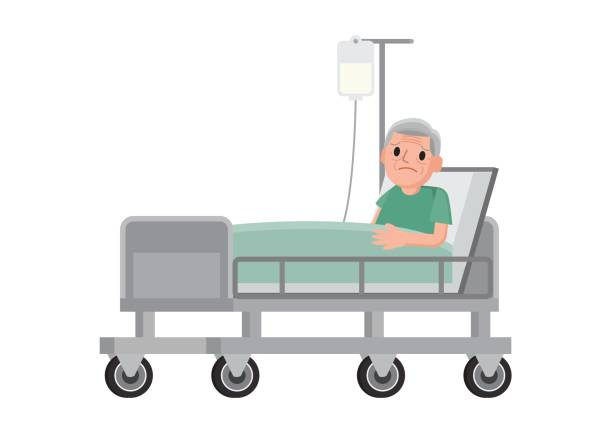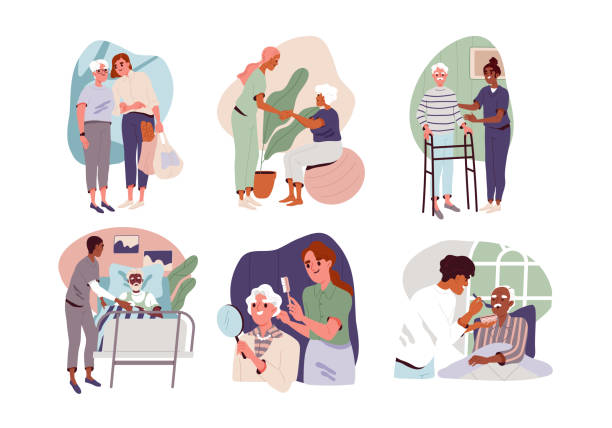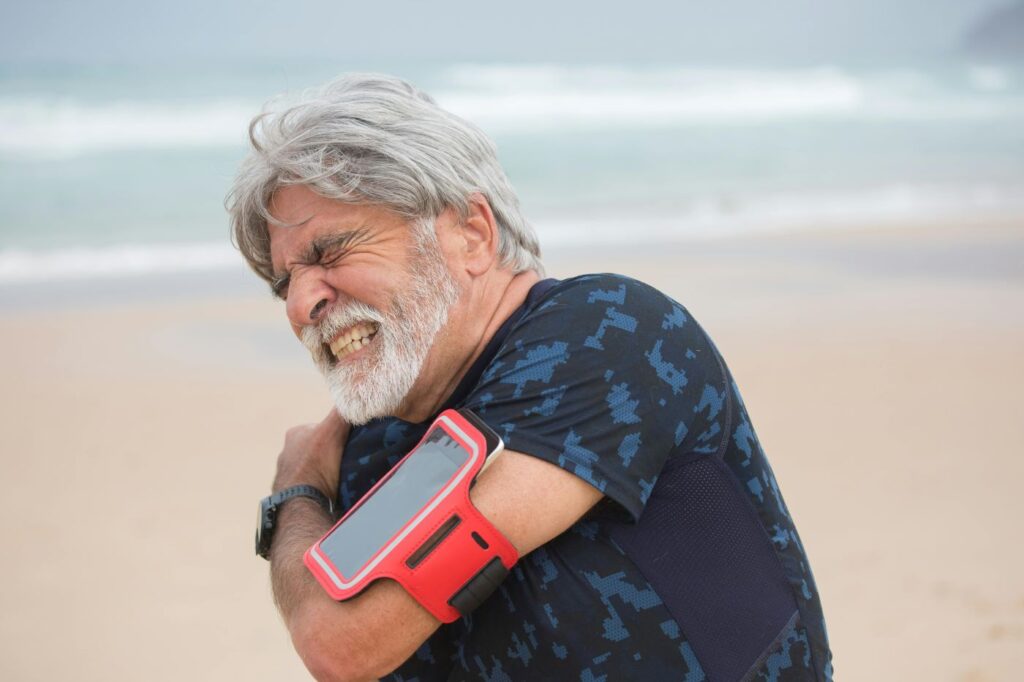Alternative Treatments, Health
What is the Best Back Pain Relief for the Elderly
Back pain is a regular occurrence as we age. This could be due to a number of causes, including degenerative changes in the spine, osteoporosis, or arthritis. Back pain can have a substantial impact on an older person’s quality of life, making it harder to complete everyday tasks and pursue interests. Thus, it is critical to find appropriate back pain alleviation for the elderly.
There are numerous alternatives for addressing back pain in older individuals, but not all therapies are equal. Some drugs may be ineffective or cause undesired side effects, and surgery may be too intrusive for some people. In this article, we will look at the most effective and safe back pain management solutions for the elderly, allowing them to live peacefully and enjoy their golden years.

Understanding Back Pain in the Elderly
Our bodies change as we get older, and the spine is no exception. The spinal column, which is made up of 33 vertebrae, becomes less flexible, and the discs between them lose water content, resulting in poorer shock absorption. These alterations can result in back pain in elderly persons.
Causes of Back Pain
Several causes can contribute to older individuals’ back pain, including:
- Arthritis is a common source of back pain in older persons. Osteoarthritis, for instance, can lead to cartilage loss in the joints, resulting in discomfort and inflammation.
- Osteoporosis is a disorder in which the bones become brittle and weak, increasing the likelihood of fractures. Compression fractures of the spine can cause significant back discomfort.
- Degenerative disc disease is a condition in which the discs between the vertebrae deteriorate, causing pain and suffering.
- Spinal stenosis is characterized by a narrowing of the spinal canal, which puts pressure on the nerves and causes pain and suffering.
Common Back Conditions in Older Adults
Common back issues among elderly persons include:
- Chronic pain is a condition that lasts longer than three months and can be caused by a variety of conditions such as arthritis, degenerative disc degeneration, and spinal stenosis.
- Spinal fractures can cause significant back pain and are caused by osteoporosis, trauma, or other underlying problems.
- Spondylolisthesis is when one vertebra slips forward over the vertebra below it, causing pain and suffering.
Risk Factors and Prevention
Several risk factors may increase the chance of back discomfort in older persons, including:
- Age: As we age, our chances of having back discomfort rise.
- Genetics: Certain individuals may be predisposed to getting back discomfort owing to genetic causes.
- Lifestyle: Poor posture, a lack of exercise, and obesity can all raise the risk of back discomfort.
Maintaining excellent posture, getting regular exercise, eating a balanced diet, and not smoking are all ways to prevent back discomfort in older folks.
In conclusion, back discomfort is a widespread condition among older persons.

Non-Invasive Pain Relief Methods
When it comes to controlling back pain in the elderly, non-invasive approaches are frequently recommended. These techniques can help relieve pain and discomfort without the use of surgery or drugs. Here are some non-invasive pain management strategies that can be useful for seniors:
Heat and Cold Therapy
Heat and cold therapy can be effective for treating back pain. Applying a heating pad or warm towel to the affected area might assist boost blood flow and relax the muscles. Cold therapy, such as an ice pack, helps reduce inflammation and numb the affected area. These therapies must be used correctly and not for an extended period of time, as they might cause skin and tissue damage.
Exercise and Physical Activity
Exercise and physical exercise can help to relieve back pain by strengthening the muscles that support the spine. Low-impact workouts like walking, swimming, and yoga might be beneficial to seniors. It’s critical to start slow and progressively increase the intensity and length over time. A physical therapist can also recommend exercises that are safe and effective for elders.
Alternative Therapies
Acupuncture and massage are examples of alternative therapies that can help manage back discomfort. Acupuncture involves inserting tiny needles into precise places on the body to promote healing. Massage can assist to relax muscles and relieve tension. It is critical to find a licensed and trained practitioner for these treatments.
Overall, non-invasive pain treatment methods can be beneficial in treating back pain in the elderly. These techniques can help relieve pain and discomfort without the use of surgery or drugs. Seniors can alleviate back pain and enhance their quality of life by combining heat and cold therapy, exercise and physical activity, and alternative remedies.

Medical Interventions
Medical therapies can be effective in addressing back pain in the elderly. This section will cover two sorts of medical interventions: drugs and injections/surgeries.
Medications
There are various drugs that can be used to treat back pain in the elderly. Nonsteroidal anti-inflammatory medications (NSAIDs) are commonly recommended to alleviate inflammation and pain. These medications can be beneficial, but they can also have negative effects, particularly when used for an extended period.
Opioids are another class of medications that can be used to treat back pain. However, they are often reserved for severe pain and are not advised for long-term usage because to the danger of addiction and other negative effects.
Injections and Surgeries
In some circumstances, injections or surgery may be required to alleviate back discomfort in the elderly. Nerve blocks, for example, can be used to prevent pain impulses from reaching certain nerves in the spine. Radiofrequency ablation is another less invasive method that can be used to block pain signals.
In more severe cases, surgery may be required. A laminectomy, for example, is the removal of a piece of the vertebrae to relieve pressure on the spinal cord. Spinal fusion is another surgical procedure that involves joining two or more vertebrae together to support the spine.
Other operations for treating back discomfort in the elderly include vertebroplasty and kyphoplasty. These procedures involve injecting a cement-like substance into the vertebrae to help fix fractures and ease pain.
Overall, medical interventions can be an effective way to alleviate back discomfort in the elderly. However, it is critical to collaborate closely with a doctor to establish the best course of treatment depending on your specific needs and circumstances.

Creating a Comprehensive Pain Management Plan
When it comes to controlling back pain in the elderly, a thorough pain management approach is required. This plan should include a group of healthcare providers, such as doctors, physical therapists, and pain specialists, who can collaborate to create a personalized strategy for each patient.
A solid pain management strategy should include a variety of treatments that address both the physical and emotional components of persistent back pain. Medication, physical therapy, exercise, and counseling are all possible options.
drug can assist in alleviating pain and inflammation, but it is critical to consult with a doctor to determine the appropriate drug and dosage for each patient. Physical therapy and exercise can assist in increasing flexibility, strength, and mobility, lowering pain, and increasing quality of life.
Counseling can also be an important component of a pain treatment strategy, as chronic pain can have a substantial influence on a person’s mental well-being. Counseling can assist patients in developing coping mechanisms and increasing their overall quality of life.
In addition to these therapies, there are various home remedies that can help alleviate back pain, including heat therapy, massage, and stretching. These remedies can be integrated into a pain management strategy to assist patients in managing their pain on a daily basis.
Overall, developing a thorough pain management strategy is critical for controlling persistent back pain in the elderly. Patients can enhance their quality of life and lessen their pain levels by collaborating with a team of healthcare specialists and implementing a number of treatments.
Conclusion
Addressing back pain in the elderly involves a multifaceted approach focused on relief and prevention. From targeted exercises to improve strength and flexibility to lifestyle adjustments, the remedies encompass a holistic strategy. Incorporating gentle stretching routines, maintaining proper posture, and considering pain management techniques contribute to enhanced comfort. Empowering seniors with tailored strategies ensures a more active and pain-free lifestyle, promoting overall well-being in their golden years.


